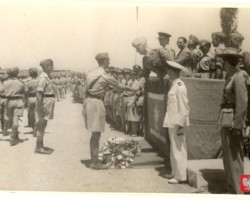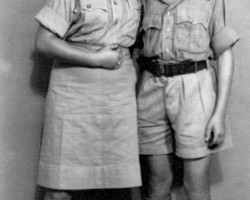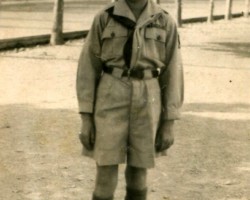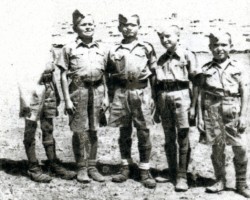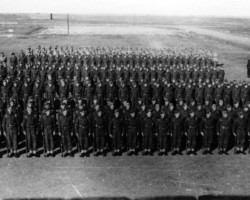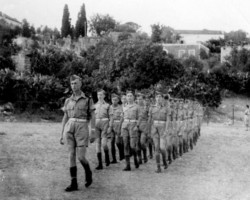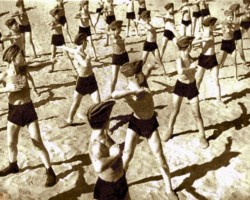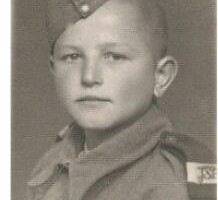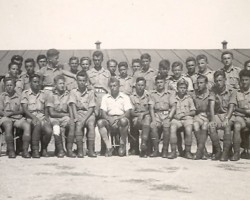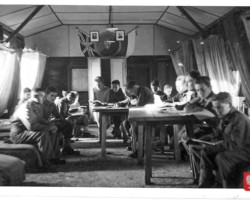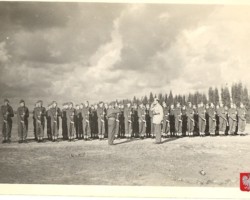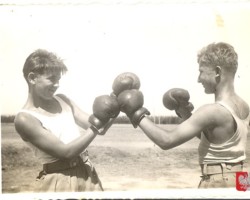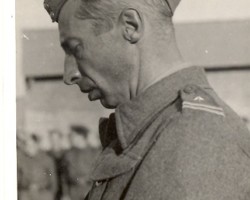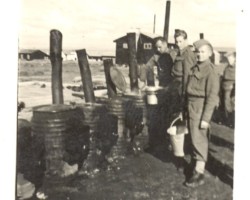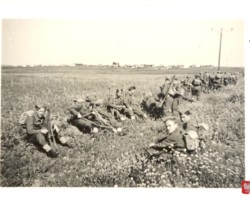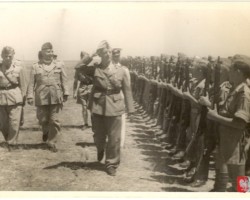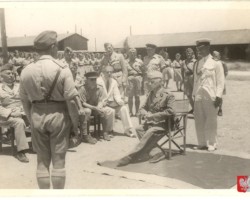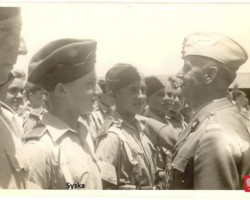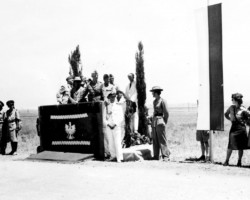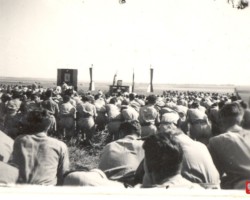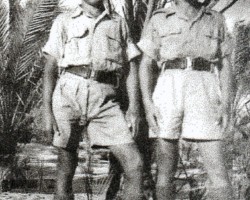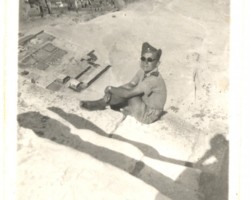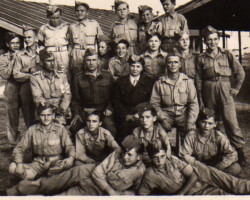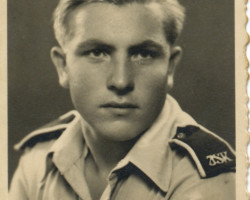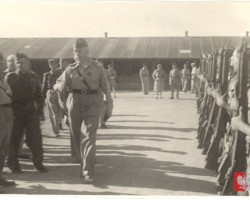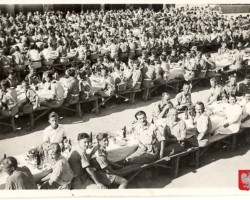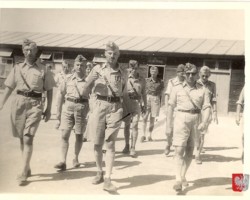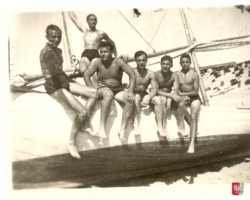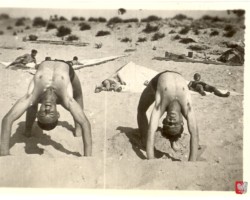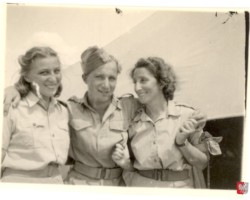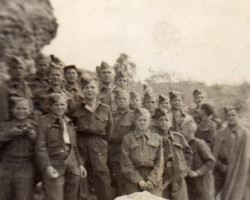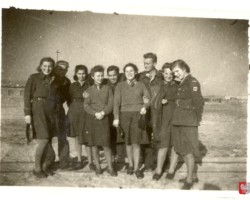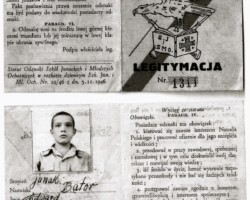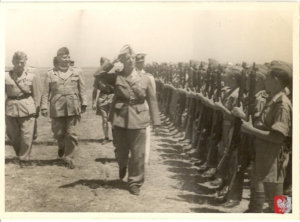 Since the announcement of the “amnesty” for Polish citizens and the beginning of the formation of the Polish Army in the USSR, civilians began to arrive in large numbers to the concentration sites, including many children, mainly orphans. Wanting to take care of them, General Anders, by order of 12 September 1941, established the School of Junior High Schools, and the first commandant of the “Junior Units” was Captain Sarnowski. In the case of girls, the units were called “Units of Junior Volunteers”. A “Junior High School” was also opened for them.
Since the announcement of the “amnesty” for Polish citizens and the beginning of the formation of the Polish Army in the USSR, civilians began to arrive in large numbers to the concentration sites, including many children, mainly orphans. Wanting to take care of them, General Anders, by order of 12 September 1941, established the School of Junior High Schools, and the first commandant of the “Junior Units” was Captain Sarnowski. In the case of girls, the units were called “Units of Junior Volunteers”. A “Junior High School” was also opened for them.
Age was not as important in recruitment to the Junaks as the desire to save Polish children from hunger and disease. In order to distract them from their tragic experiences and poor health, schools were opened, where, in difficult conditions, they began to make up for the backlog caused by the first years of the war.
With the evacuation of Polish troops from Totskoye to Uzbekistan, the Junak troops were quartered in the towns of Wrewsko, Narpaj, Guzar, Dżalal-Abbab, Kermine and Jangi-Jul. The volunteer troops stayed in Karkin Batosh, which was soon called the “Valley of Death” due to drought and very high temperatures. There they continued their education. The Junak School was organized on a military model – classes were platoons, 4-5 platoons constituted a company. The teachers were volunteers from the Women’s Auxiliary Service. Without textbooks, equipment or school supplies, they tried to make up for the time lost by the children. In the next stage, the “Junack School” moved to Guzar, and the second group – to the vicinity of the city of Kitab.
Children aged 8-13 attended the “Common Coeducational School at the Polish Army in the USSR”. Those aged 14-17 studied at the “Junior School at the Polish Army in the USSR in Kermine” and at the “Junior School at the Polish Army in the USSR in Guzar”. At the beginning of August 1942, the Junak schools in the USSR numbered 2,738 Junaks. In addition to general education classes, children also had a number of basic military classes, including field exercises. They were to prepare them for later service for the Fatherland.
In two evacuations from the USSR, a total of 4,618 female and male cadets were evacuated to the Middle East. In the cadet schools on the “inhuman land” 123 female and 160 male cadets died.
In Iran, the youth workers were placed in transit camps in Tehran, Pahlevi and Khanaquin. Thus, in camp no. 4 in Tehran, out of 1,066 youth workers who were there, 309 girls over the age of 16 remained in the “Junior School”. 320 were sent to their evacuated parents, 25 were included in the Women’s Auxiliary Service, and the remaining girls under the age of 16 were placed under the care of civilian authorities. They ceased to be students of the “Junior School”.
At the end of 1942, the aforementioned school was moved to Palestine and renamed the “School of Younger Volunteers” (in comparison to the older volunteers from PWSK). Education was conducted here at the level of primary school, vocational school, junior high school and high school. Its next locations were: Gedera, Rehovoth, Jenin and Nazareth. During the five years of its existence, the “School” was graduated by: 254 students from the Primary School, 563 – junior high school (so-called small matriculation exam at the end), Merchant Junior High School – 52 girls, Humanities High School – 248, Pedagogical High School – 84, Administrative and Trade High School – 45.
The “Junior Volunteer School” was moved in August 1947 to Foxley, Great Britain, where 404 young volunteers continued their education under the care of 59 staff. The education at the school ended in February 1948, and the School was finally dissolved on 15 March of that year.
In the Middle East, the following schools were established: the Junior School of Juniors (grades I-IV of primary school) in Nazareth, the Senior School of Juniors (grades V-VII of primary school) in El Quastina and Barbara, and the Cadet School (for students who had completed primary school), which was located in Bach-Shid and then in Barbara. In the latter, education was organized at the junior high and high school level, and over a thousand boys studied at the Cadet School. In the period 1944-45, some of them joined Polish air units in Great Britain or the 2nd Corps in Italy.
Within the framework of the junaki schools, 3 Mechanical Schools III, IV and V, 2 Mechanical-Aviation Gymnasiums and a Mechanical High School were established. All of them were located in Palestine in the towns of Kiryat Motzkin, Sarafand and Beit Nabala next to a large British repair base. In these schools, special emphasis was placed on vocational classes held in repair workshops, while general education classes and the junakis’ accommodation were in tents.
In Egypt, schools for young soldiers were also established – the 1st and 2nd Mechanical Schools near the large British transport base in Tel-El-Kebir; the Mechanical Gymnasium and the Mechanical-Aviation High School for young young soldiers in Heliopolis. In Menai, the Young Soldiers’ School of Communications was also established, training future staff of the signal forces.
In total, over 3,600 boys and 800 girls studied in youth schools in the Middle East, Palestine and Egypt.
In June 1947, the British authorities, who had been financing Polish education in the Middle East since 1945, decided to transfer the schools to Great Britain, to finally liquidate them a year later. During the last months of their education, the Junaks were placed in camps in Glasgow, Elifrod, Bondey, Foxley, Powlemere, Hursley. After the schools were closed, the older Junaks were sent to physical labor, the younger ones to further education, while the older Junaks joined the Resettlement and Training Corps.
Exhibition Materials
